Home>Storage Ideas>Kitchen Storage>This Kitchen Cleaning Checklist Makes Tidying Up Less Daunting
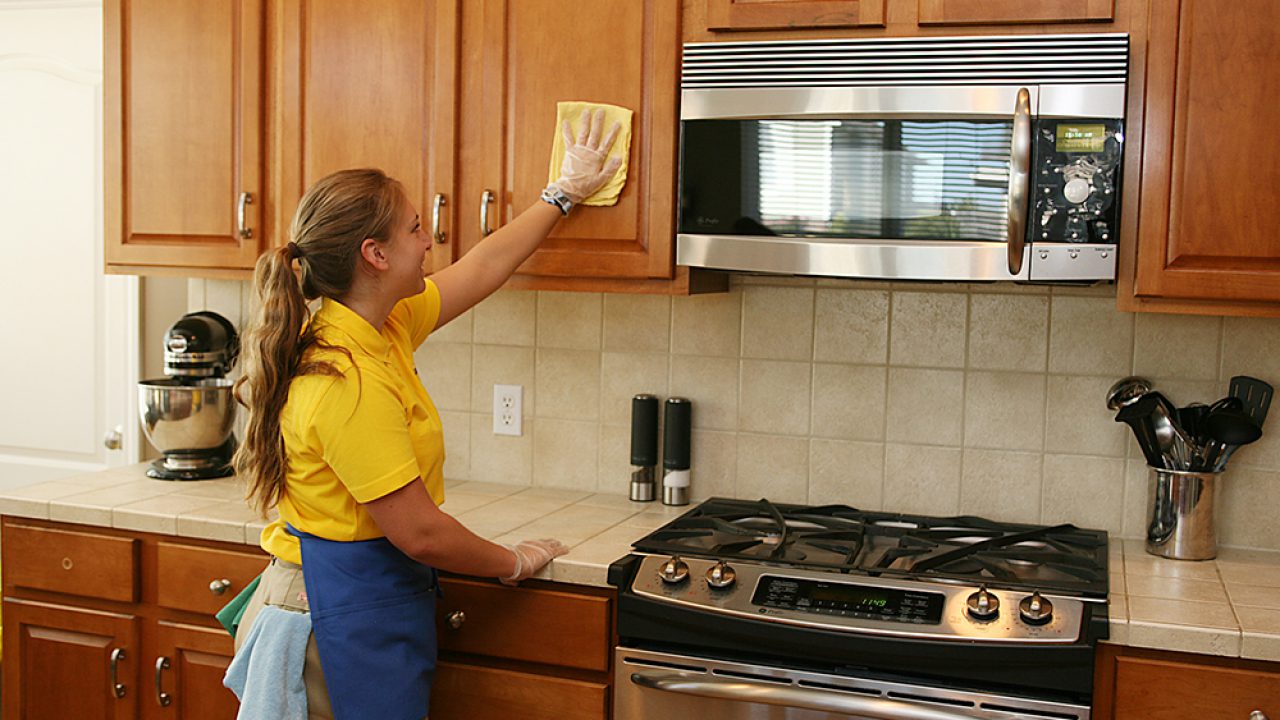

Kitchen Storage
This Kitchen Cleaning Checklist Makes Tidying Up Less Daunting
Modified: January 19, 2024
Stay organized in your kitchen with this helpful kitchen cleaning checklist. Discover practical kitchen storage ideas to make tidying up less daunting.
(Many of the links in this article redirect to a specific reviewed product. Your purchase of these products through affiliate links helps to generate commission for Storables.com, at no extra cost. Learn more)
Introduction
Welcome to the world of kitchen storage ideas! Having an organized and functional kitchen is essential for any home cook or culinary enthusiast. A well-organized kitchen not only makes it easier to find what you need when you need it, but it also maximizes the efficiency of your cooking process. One key aspect of maintaining an organized kitchen is having ample storage space to keep all your essentials neatly tucked away.
From cabinets and drawers to pantry shelves and countertop organizers, there are numerous kitchen storage solutions available to suit every need and preference. Whether you have a small apartment kitchen or a spacious gourmet culinary space, it’s important to make the most of the available storage opportunities.
In this comprehensive guide to kitchen storage ideas, we will explore various tips and tricks to help you optimize your kitchen storage space. We’ll cover everything from creative ways to utilize cabinet space to innovative storage solutions for pantry items. So, let’s dive in and discover how you can transform your kitchen into an organized and efficient space!
Key Takeaways:
- Transform your kitchen into an organized and efficient space by following these comprehensive kitchen storage ideas and cleaning techniques. Enjoy the benefits of a well-organized kitchen for a more enjoyable cooking experience!
- Regularly maintaining your kitchen with these tips will not only improve its appearance but also ensure a hygienic and safe space for food preparation. Enjoy the satisfaction of a neatly organized and efficient kitchen!
Gathering Supplies
Before you embark on your kitchen storage project, it’s important to gather all the necessary supplies. This will ensure that you have everything you need to efficiently organize your kitchen. Here are some essential supplies you’ll want to have on hand:
- Measuring Tape: This will help you accurately measure the dimensions of your cabinets, drawers, and other storage spaces to ensure a perfect fit for your storage solutions.
- Drawer and Cabinet Organizers: These come in various shapes and sizes and are designed to maximize the use of your drawer and cabinet space. Look for options with adjustable dividers or modular components for added flexibility.
- Baskets and Bins: These versatile storage solutions are perfect for grouping like items together and keeping your pantry or cabinets neat and tidy. Look for options with handles for easy access and portability.
- Label Maker: Labels are a great way to keep track of what’s stored in each container or drawer. Invest in a label maker or simply use sticky notes and markers to create clear and visible labels.
- Shelving Units: If you have limited cabinet space, consider adding additional shelving units to create vertical storage opportunities. These can be placed on countertops or mounted on walls to maximize your storage potential.
- Hanging Hooks and Racks: Hanging hooks and racks are perfect for utilizing vertical space on the inside of cabinet doors or on walls. They can be used to hang utensils, mugs, pot lids, or even small pans.
- Storage Containers: Invest in a set of high-quality storage containers with matching lids. These are perfect for storing leftovers, dry ingredients, and other pantry essentials. Look for options that are stackable to save space.
- Plastic Bag Holders: If you tend to accumulate plastic bags, consider investing in a plastic bag holder. These can be mounted on walls or placed inside cabinets to keep your plastic bag collection organized and easily accessible.
By gathering these supplies before you begin organizing your kitchen, you’ll be well-prepared to tackle the task at hand. Having the right tools and storage solutions will make the process smoother and more efficient, allowing you to achieve the well-organized kitchen of your dreams. So, grab your supplies and let’s move on to the next step!
Clearing and Decluttering
Now that you’ve gathered your supplies, it’s time to tackle the first step in organizing your kitchen: clearing and decluttering. Before you can create efficient storage solutions, you’ll need to get rid of any unnecessary items and declutter your space. Here’s how to do it:
- Empty and Assess: Begin by emptying out your cabinets, drawers, and pantry shelves. Take a moment to assess each item and determine if it’s something you truly need or use. Be honest with yourself and let go of items that have been sitting untouched for months or are no longer in good condition.
- Sort and Categorize: Once you’ve cleared out your storage spaces, start sorting and categorizing the items. Group similar items together, such as baking supplies, canned goods, spices, or utensils. This will give you a clear idea of how much you have and what storage solutions you’ll need.
- Donate or Dispose: If you come across items that are still in good condition but no longer serve a purpose in your kitchen, consider donating them to a local charity or giving them to friends or family. As for items that are old, broken, or expired, dispose of them responsibly in accordance with your local waste management guidelines.
- Maximize Space: As you put items back into your storage spaces, think about how you can maximize the available space. Utilize drawer and cabinet organizers to create separate compartments for different items. Stack pans or pots to save vertical space. Use the insides of cabinet doors to hang hooks or racks for additional storage. The goal is to create a system that is both functional and visually pleasing.
- Keep Countertops Clear: Clear countertops can make a world of difference in making your kitchen feel organized. Only keep essential items, such as frequently-used appliances or utensils, on the countertop. Store the rest in cabinets or drawers to free up space and create a clean and clutter-free work surface.
Clearing and decluttering your kitchen is an essential step in creating an organized and efficient space. By letting go of unnecessary items and creating a system for categorizing and storing your belongings, you’ll set the foundation for a well-organized kitchen. Let’s move on to the next step and tackle those countertops and surfaces!
Wiping Down Countertops and Surfaces
Now that you’ve cleared and decluttered your kitchen, it’s time to give attention to the surfaces. Countertops and surfaces can accumulate dust, crumbs, and spills over time, so it’s important to thoroughly clean and sanitize them. Here’s how to do it:
- Clear the Surface: Remove any items, such as small appliances, utensil holders, or decorative items from the countertops. This will give you a clear and open space to work with.
- Wipe with Warm, Soapy Water: Start by filling a basin with warm water and adding a few drops of dish soap. Dip a clean cloth or sponge into the soapy water and wring out the excess. Wipe down the countertops, backsplash, and any other surfaces, paying attention to any stains or sticky spots. Rinse the cloth or sponge frequently to avoid spreading dirt.
- Target Stubborn Stains: For more stubborn stains, create a paste by mixing baking soda and water. Apply the paste to the stain and let it sit for a few minutes. Then, gently scrub the area with a sponge or soft brush. Rinse off the paste with clean water and dry the surface with a clean cloth.
- Disinfect: To ensure a hygienic surface, it’s important to disinfect the countertops and surfaces. Use a disinfecting spray or wipes specifically designed for kitchen surfaces. Follow the manufacturer’s instructions and thoroughly wipe down the areas, including handles, knobs, and edges.
- Dry and Polish: Once you’ve finished cleaning and disinfecting, use a clean, dry cloth to wipe away any excess moisture. This will prevent water spots and streaks. For a polished finish, use a natural cleaner or stainless steel polish if applicable to your surfaces.
- Replace Items: Once the surfaces are clean and dry, you can now put back the items you had previously removed. Consider organizing them in a way that is functional and visually appealing, keeping frequently-used items easily accessible.
Regularly wiping down your countertops and surfaces not only keeps your kitchen looking clean and inviting, but it also ensures a hygienic environment for food preparation and cooking. By following these steps, you’ll have sparkling clean surfaces that are ready for the next step in your kitchen organization journey. Let’s move on to cleaning the sink and faucet!
Cleaning the Sink and Faucet
When it comes to kitchen cleanliness, one area that often gets overlooked is the sink and faucet. These areas can accumulate grime, soap scum, and hard water deposits over time. Cleaning and maintaining a clean sink and faucet not only improves the overall appearance of your kitchen but also ensures proper hygiene. Here’s how to effectively clean these areas:
- Clear the Sink: Start by removing any dishes, utensils, or food scraps from the sink. This will give you a clear space to work with.
- Remove Debris: Use a garbage disposal brush or a regular sponge to remove any leftover food particles or debris. If you have a garbage disposal, running it with some ice cubes can help freshen and clean the disposal unit.
- Apply a Cleaning Solution: Depending on the material of your sink, you can use a combination of warm water and dish soap, a mild abrasive cleaner, or a specialized sink cleaner. Apply the cleaning solution to the surface of the sink and faucet.
- Scrub: Use a soft sponge or scrub brush to gently scrub the sink and faucet, focusing on areas with stains or residue. Pay attention to the corners, edges, and areas around the drain. For hard-to-reach areas, use an old toothbrush or a small cleaning brush.
- Remove Mineral Deposits: If you’re dealing with hard water stains or mineral deposits, you can use a mixture of vinegar and water or a mild acid-based cleaner. Dip a cloth or sponge into the solution and apply it to the affected areas. Let it sit for a few minutes, then scrub and rinse thoroughly.
- Rinse and Dry: After scrubbing, thoroughly rinse the sink and faucet with clean water to remove any cleaning residue. Use a dry cloth or paper towel to dry the surfaces, preventing water spots or streaks.
- Polish: For an extra shine, you can apply a stainless steel polish or a natural cleaner specifically designed for sinks. Follow the instructions on the product and use a soft cloth to apply and buff the sink and faucet.
- Maintain Regular Cleaning: To keep your sink and faucet looking their best, make it a habit to clean them regularly. A quick wipe down with warm, soapy water after each use can help prevent the buildup of stains and grime.
By following these steps and incorporating regular sink and faucet cleaning into your routine, you’ll maintain a clean and hygienic kitchen. Clean surfaces not only enhance the overall appearance of your kitchen but also create a welcoming and pleasant environment for food preparation and cleaning. With the sink and faucet sparkling clean, let’s move on to cleaning appliances!
Cleaning Appliances
Appliances in the kitchen play a vital role in helping us prepare delicious meals. However, they can accumulate grease, spills, and food residue over time. Cleaning your kitchen appliances regularly not only improves their performance but also keeps your kitchen looking pristine. Here’s how to effectively clean some common kitchen appliances:
Refrigerator
– Empty the refrigerator: Start by removing all the food items from the refrigerator and discarding any expired or spoiled items.
– Remove shelves and drawers: Take out the removable shelves and drawers and wash them with warm, soapy water. Rinse and dry them thoroughly before placing them back in the refrigerator.
– Wipe the interior: Use a mixture of warm water and mild detergent to wipe the interior surfaces of the refrigerator, including the walls and shelves. Pay special attention to any spills or stains.
– Clean the gaskets: The gaskets around the refrigerator doors can accumulate dirt and grime. Wipe them down with a damp cloth soaked in a mild solution of water and detergent.
– Clean the exterior: Wipe the exterior of the refrigerator using a microfiber cloth and a mixture of warm water and mild detergent. Dry it with a clean cloth to prevent streaks.
Oven
– Remove oven racks: Take out the oven racks and soak them in warm, soapy water. Scrub them with a sponge to remove any baked-on grime. Rinse and dry them before placing them back in the oven.
– Wipe the interior: If there are any loose food debris or spills, wipe them away with a damp cloth or sponge. For stubborn stains or grease, use a specialized oven cleaner according to the manufacturer’s instructions.
– Clean the oven door: Use a degreaser or a mixture of baking soda and water to clean the oven door. Scrub it gently with a sponge or soft cloth to remove any grease or stains.
– Clean the exterior: Wipe down the exterior of the oven, including the control panel, with a damp cloth and a mild detergent. Dry it thoroughly to maintain a polished finish.
Microwave
– Remove crumbs and debris: Remove any loose debris or crumbs from the microwave by wiping the interior with a damp cloth or sponge.
– Remove stains and odors: Mix equal parts of water and white vinegar in a microwave-safe bowl. Heat the mixture in the microwave for a few minutes until it starts to steam. Let it sit for a few more minutes, then carefully remove the bowl and wipe down the interior with a damp cloth.
– Clean the exterior: Wipe the exterior of the microwave, including the control panel and door, with a damp cloth soaked in water and mild detergent. Dry it thoroughly to prevent streaks.
Remember to always refer to the manufacturer’s instructions for specific cleaning recommendations for your appliances. Regularly cleaning your kitchen appliances will keep them functioning optimally and prolong their lifespan. With your appliances sparkling clean, let’s move on to scrubbing the stovetop and oven!
Scrubbing the Stovetop and Oven
The stovetop and oven are often the workhorses of the kitchen, helping us prepare delicious meals. However, they can quickly accumulate grease, spills, and baked-on food residue. Keeping these areas clean not only improves their performance but also ensures a safe cooking environment. Here’s how to effectively scrub the stovetop and oven:
Stovetop
– Remove grates and burner caps: Take off the grates and burner caps from the stovetop and soak them in warm, soapy water. Use a scrub brush or sponge to remove any grease or stains. Rinse and dry them thoroughly before placing them back on the stovetop.
– Wipe away loose debris: Use a damp cloth or sponge to wipe away any loose debris or crumbs from the stovetop surface.
– Clean burner coils or elements: For electric stovetops, gently lift the burner coils or elements and wipe them down with a damp cloth. Avoid using excessive moisture or getting the electrical connections wet.
– Scrub the surface: Depending on your stovetop material, you can use a specially formulated stovetop cleaner or a mixture of warm water and mild detergent. Apply the cleaner to the surface and use a non-abrasive sponge or cloth to scrub away any grease, stains, or residue. Rinse and dry the surface thoroughly.
– Polish the surface: For a polished finish, you can use a stovetop cleaner or a small amount of white vinegar applied to a clean cloth. Gently buff the surface to restore its shine.
Oven
– Prepare the oven: Before cleaning the oven, remove any racks or accessories and set them aside. If your oven has a self-cleaning function, refer to the manufacturer’s instructions to initiate the cleaning cycle.
– Remove loose debris: Use a dry cloth or sponge to wipe away any loose debris or crumbs from the interior of the oven.
– Apply a cleaning solution: Depending on the level of grease and grime, use a commercial oven cleaner or create a paste with baking soda and water. Apply the cleaning solution to the interior surfaces of the oven, focusing on areas with baked-on residue or stains.
– Let the solution sit: Allow the cleaning solution to sit for the recommended amount of time, usually around 15-30 minutes. This will help break down the grease and make it easier to scrub away.
– Scrub the interior: Use a non-abrasive sponge or scrub brush to gently scrub the interior surfaces of the oven. Pay extra attention to stubborn stains or messy areas. Rinse the sponge or brush frequently in warm water.
– Wipe away residue: After scrubbing, use a damp cloth or sponge to wipe away any residual cleaning solution or debris from the oven. Rinse the cloth or sponge frequently and wring out excess moisture.
– Clean racks and accessories: Scrub the oven racks and accessories with a sponge or brush to remove any grease or residue. Rinse and dry them thoroughly before placing them back in the oven.
– Clean the oven door: Use a glass cleaner or a mixture of vinegar and water to wipe down the oven door. Pay attention to any spots or streaks and ensure a clean and clear view through the glass.
– Let the oven dry: After cleaning, allow the oven to air dry completely before using it again.
Regularly scrubbing the stovetop and oven will not only keep them looking their best but also ensure their optimal performance. With your stovetop and oven sparkling clean, let’s move on to the next step: cleaning the microwave!
Cleaning the Microwave
The microwave is a convenient appliance that helps us heat and cook food quickly. However, it can become dirty and develop food stains and odors over time. Cleaning your microwave regularly not only keeps it looking and smelling fresh but also ensures safe and efficient operation. Here’s how to effectively clean your microwave:
- Remove debris: Start by removing any loose debris or food particles from the microwave. Wipe down the interior with a dry cloth or use a damp paper towel to remove any stubborn stains.
- Create a cleaning solution: Combine equal parts of water and white vinegar in a microwave-safe bowl. You can also add a few drops of lemon juice for a pleasant scent.
- Microwave the solution: Place the bowl with the cleaning solution inside the microwave and heat it on high for 2-3 minutes. The steam generated from the solution will help loosen any dried-on food or stains.
- Let it stand: Once the microwave has completed the heating cycle, keep the door closed and let the steam from the solution work its magic. Allow it to stand for about 5 minutes to further soften the stains and grease.
- Wipe down the interior: Take a damp cloth or sponge and carefully wipe down the interior surfaces of the microwave. Pay extra attention to any stubborn stains or areas with dried-on food. You can also use a non-abrasive scrub brush for tougher stains.
- Remove the turntable and clean: If your microwave has a turntable, remove it and wash it with warm, soapy water. Rinse it thoroughly and dry it before placing it back in the microwave.
- Clean the exterior: Use a damp cloth or sponge to wipe down the exterior of the microwave, including the control panel and door. For stainless steel surfaces, you can use a specialized stainless steel cleaner or a mixture of mild detergent and water.
- Dry and deodorize: After cleaning, use a dry cloth to remove any moisture from the interior and exterior of the microwave. To eliminate any lingering odors, you can place a bowl of baking soda or a few lemon slices inside the microwave for a few hours.
Cleaning your microwave regularly not only helps maintain its appearance but also ensures safe and efficient operation. By following these steps, you can enjoy a clean and fresh microwave for all your cooking and heating needs. With the microwave sparkling clean, let’s move on to the next step: wiping down cabinets and drawers!
Read more: The Ultimate Bathroom Cleaning Checklist
Wiping Down Cabinets and Drawers
Cabinets and drawers in the kitchen are susceptible to dust, food particles, and grease buildup. To maintain a clean and organized kitchen, it’s important to regularly wipe down these storage areas. Cleaning cabinets and drawers not only keeps them looking fresh but also prevents the accumulation of dirt and potential contamination of stored items. Here’s how to effectively wipe down your cabinets and drawers:
- Empty and declutter: Start by emptying out the cabinets and drawers. Remove all items and set them aside. This will allow you to thoroughly clean the surfaces and declutter any unnecessary items.
- Dust and cobwebs: Use a microfiber cloth or a duster to remove any dust or cobwebs from the cabinet and drawer surfaces. Pay attention to corners, edges, and any hard-to-reach areas.
- Clean the surfaces: Prepare a cleaning solution by mixing warm water and a mild detergent. Dip a cloth or sponge into the solution and wring out the excess moisture. Wipe down the interior and exterior surfaces of the cabinets and drawers, including the shelves, sides, and doors.
- Remove stains and grease: For tougher stains or grease buildup, you may need to use a specialized cabinet cleaner or a mixture of vinegar and water. Apply the cleaner to a soft cloth or sponge and gently scrub the affected areas. Rinse the cloth or sponge frequently and wring out excess moisture.
- Pay attention to handles and hardware: Don’t forget to clean the handles, knobs, and hardware of the cabinets and drawers. Use a cloth or sponge soaked in the cleaning solution to remove any dirt or grime. Dry these areas thoroughly to prevent water damage.
- Dry and organize: After wiping down the cabinets and drawers, use a dry cloth to remove any residual moisture. This will prevent water spots or streaks. Once dry, you can organize the items and put them back into their respective places. Consider using drawer dividers or storage bins to keep items organized.
- Maintain regular cleaning: Make it a habit to wipe down your cabinets and drawers on a regular basis. This will help prevent the buildup of dirt and grease, making future cleaning tasks easier.
By regularly wiping down your cabinets and drawers, you’ll maintain a clean and organized kitchen space. Clean storage areas not only improve the overall appearance of your kitchen but also ensure a sanitary environment for storing and accessing your kitchen essentials. With your cabinets and drawers sparkling clean, let’s move on to cleaning the refrigerator!
To make kitchen cleaning less daunting, start by decluttering countertops and surfaces before you begin. This will make it easier to wipe down and clean the area.
Cleaning the Refrigerator
The refrigerator is the heart of any kitchen, keeping our food fresh and our beverages cold. However, over time, it can accumulate spills, stains, and unpleasant odors. Regularly cleaning and maintaining your refrigerator not only ensures food safety but also maximizes its efficiency. Here’s how to effectively clean your refrigerator:
- Remove all the food: Start by removing all the food items from the refrigerator. Place perishable items in a cooler to keep them properly chilled while you clean.
- Unplug the refrigerator (optional): If desired, you can unplug the refrigerator to conserve energy and prevent accidental power on while cleaning. However, it’s not necessary if you prefer to keep it running.
- Take out removable parts: Remove any removable shelves, drawers, and bins from the refrigerator. Wash them with warm, soapy water and rinse thoroughly. You can also leave them to soak in a mixture of warm water and mild detergent if they are heavily soiled.
- Clean the interior: Using a mixture of warm water and a mild detergent, wipe down the interior surfaces of the refrigerator, including the walls, shelves, and door compartments. Pay special attention to any spills, stains, or sticky areas. For stubborn stains or odors, you can use a solution of equal parts water and vinegar.
- Defrost the freezer (if necessary): If your refrigerator has a built-in freezer, it may need to be defrosted periodically. Follow the manufacturer’s instructions for defrosting and cleaning the freezer compartment.
- Clean the gaskets: The gaskets, or seals, around the refrigerator door can accumulate dirt and debris over time. Use a damp cloth soaked in a mild solution of water and detergent to wipe down the gaskets, removing any residue. Dry them thoroughly to prevent mildew growth.
- Clean the exterior: Use a mixture of warm water and mild detergent to wipe down the exterior surfaces of the refrigerator, including the doors, sides, and handles. For stainless steel surfaces, use a specialized stainless steel cleaner or a mixture of mild detergent and water. Dry the exterior surfaces thoroughly to prevent streaks or water spots.
- Organize and restock: Once the refrigerator is clean and dry, organize the items and put them back into the refrigerator. Consider grouping similar items together and using clear containers or bins for better organization. Check the expiration dates and dispose of any expired or spoiled items.
- Maintain regular cleaning: Make it a habit to clean your refrigerator on a regular basis. Aim to clean it thoroughly at least once every few months, or as needed. Regularly wipe down spills and remove any expired items to prevent the accumulation of dirt and odors.
By following these steps and maintaining a clean refrigerator, you’ll ensure food safety and extend the lifespan of your appliance. A clean and well-maintained refrigerator not only keeps your food fresh but also creates an inviting and hygienic kitchen environment. With your refrigerator sparkling clean, let’s move on to the final step: sweeping and mopping the floor!
Sweeping and Mopping the Floor
The kitchen floor is an area that often gets overlooked but is essential to keep clean and tidy. It accumulates dirt, spills, and food particles, which can make it both unsightly and unhygienic. Regular sweeping and mopping of the kitchen floor will not only keep it looking pristine but also maintain a safe and sanitary environment. Here’s how to effectively sweep and mop your kitchen floor:
- Clear the floor: Begin by removing any rugs, mats, or movable furniture from the kitchen floor. This will allow you to access and clean the entire surface.
- Sweep or vacuum: Use a broom, dust mop, or vacuum cleaner to remove any loose debris, crumbs, or dirt from the kitchen floor. Start at one end of the room and work your way towards the exit, ensuring you cover all the floor space.
- Focus on corners and edges: Pay extra attention to the corners and edges of the kitchen floor, as these areas tend to accumulate more dirt and debris. Use a small broom or a handheld vacuum attachment to reach these tight spaces.
- Choose the right mop: Depending on the type of flooring you have, choose a mop that is suitable for the material. For hard floors, such as tile or laminate, a microfiber mop or a traditional string mop with a bucket of water and floor cleaner will work well. For hardwood floors, use a mop and cleaner specifically designed for wood floors.
- Prepare the mop: If using a traditional string mop, soak the mop head in warm water and wring out the excess moisture. If using a microfiber mop, follow the manufacturer’s instructions on how to prepare the mop for cleaning.
- Mop the floor: Starting from one corner of the room, work your way towards the exit, mopping the floor in a back-and-forth motion. Ensure that you cover the entire floor surface, and pay special attention to any sticky spots or stains.
- Change the water if needed: If the water in the bucket becomes dirty or cloudy, replace it with clean, warm water and the appropriate amount of floor cleaner. This will help prevent spreading dirt and grime across the floor.
- Let the floor dry: Allow the floor to air dry or use a clean, dry mop or cloth to gently remove any remaining moisture. Avoid walking on the floor until it is completely dry to prevent slips or streaks.
- Replace rugs and furniture: Once the floor is dry, put back any rugs, mats, or furniture that you had temporarily moved. Ensure that they are clean before placing them back on the freshly cleaned floor.
- Maintain regular cleaning: To keep your kitchen floor looking its best, make it a habit to sweep or vacuum regularly and mop as needed. This will prevent the buildup of dirt and debris and ensure a clean and inviting kitchen.
Sweeping and mopping the kitchen floor is the final step in achieving a clean and well-organized kitchen. By regularly maintaining your kitchen floor, you’ll create a welcoming and hygienic space for cooking and gathering. With your floor swept and mopped, you can now enjoy a fresh and sparkling kitchen!
Conclusion
Congratulations! You have successfully discovered a range of kitchen storage ideas and learned how to optimize your kitchen space for efficiency and organization. By following the steps and tips outlined in this comprehensive guide, you can transform your kitchen into a well-organized and functional space that meets all your storage needs.
Throughout this guide, we explored various aspects of kitchen organization, from gathering supplies to wiping down countertops, cleaning appliances, and decluttering cabinets and drawers. Each step plays a vital role in creating a clean and efficient kitchen environment.
By regularly cleaning and maintaining your kitchen, you not only improve its overall appearance but also ensure a hygienic and safe space for food preparation. The satisfaction of opening a neatly organized cabinet or effortlessly finding your cooking utensils is something that will make your time in the kitchen more enjoyable and efficient.
Remember to customize the storage solutions according to your specific needs and kitchen layout. Every kitchen is unique, and the goal is to maximize the available space to its fullest potential. Don’t be afraid to get creative and think outside the box when it comes to organizing and utilizing your kitchen storage areas.
Make it a habit to maintain regular cleaning and organization routines so that your kitchen stays in top shape. Dedicate some time each week to decluttering, wiping down surfaces, and checking for expired items. This will prevent the accumulation of dirt and keep your kitchen running smoothly.
By implementing the kitchen storage ideas and cleaning techniques outlined in this guide, you will create a kitchen that is not only visually appealing but also highly functional and efficient. Enjoy the benefits of a well-organized kitchen and make your cooking and meal preparation experiences a breeze!
Now go ahead and put these ideas into action. Enjoy your newly organized kitchen and the ease and joy it brings to your everyday life!
Frequently Asked Questions about This Kitchen Cleaning Checklist Makes Tidying Up Less Daunting
Was this page helpful?
At Storables.com, we guarantee accurate and reliable information. Our content, validated by Expert Board Contributors, is crafted following stringent Editorial Policies. We're committed to providing you with well-researched, expert-backed insights for all your informational needs.
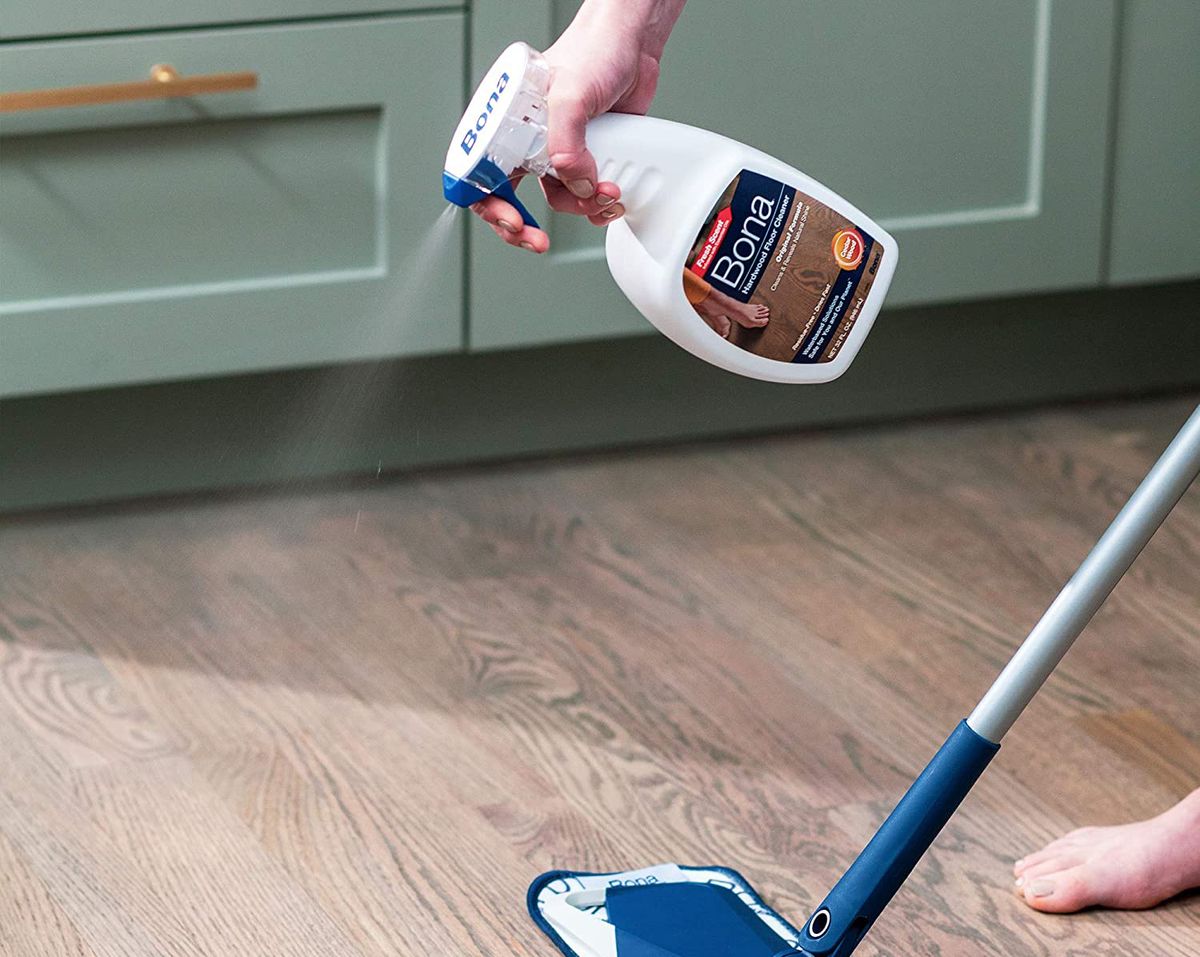
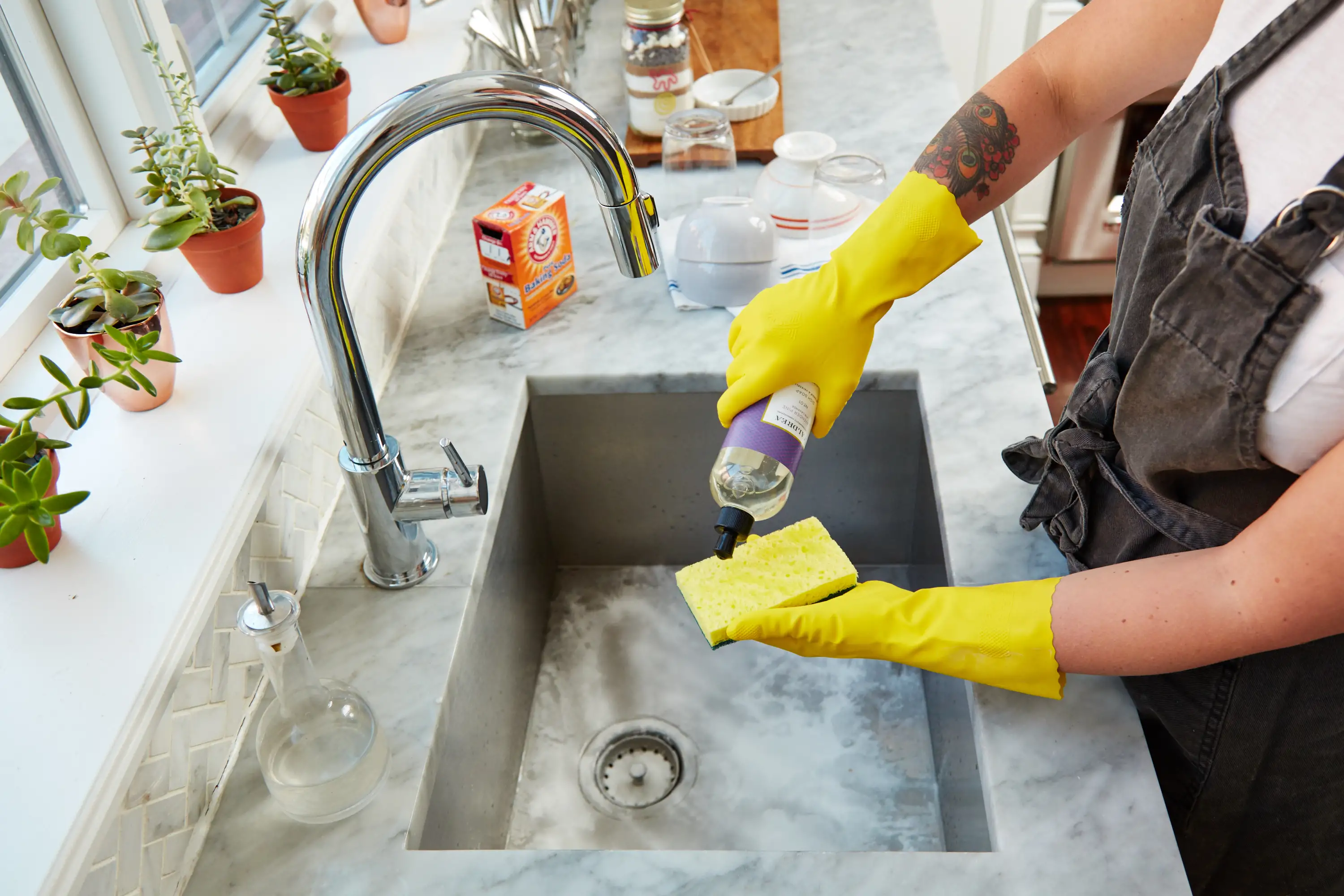
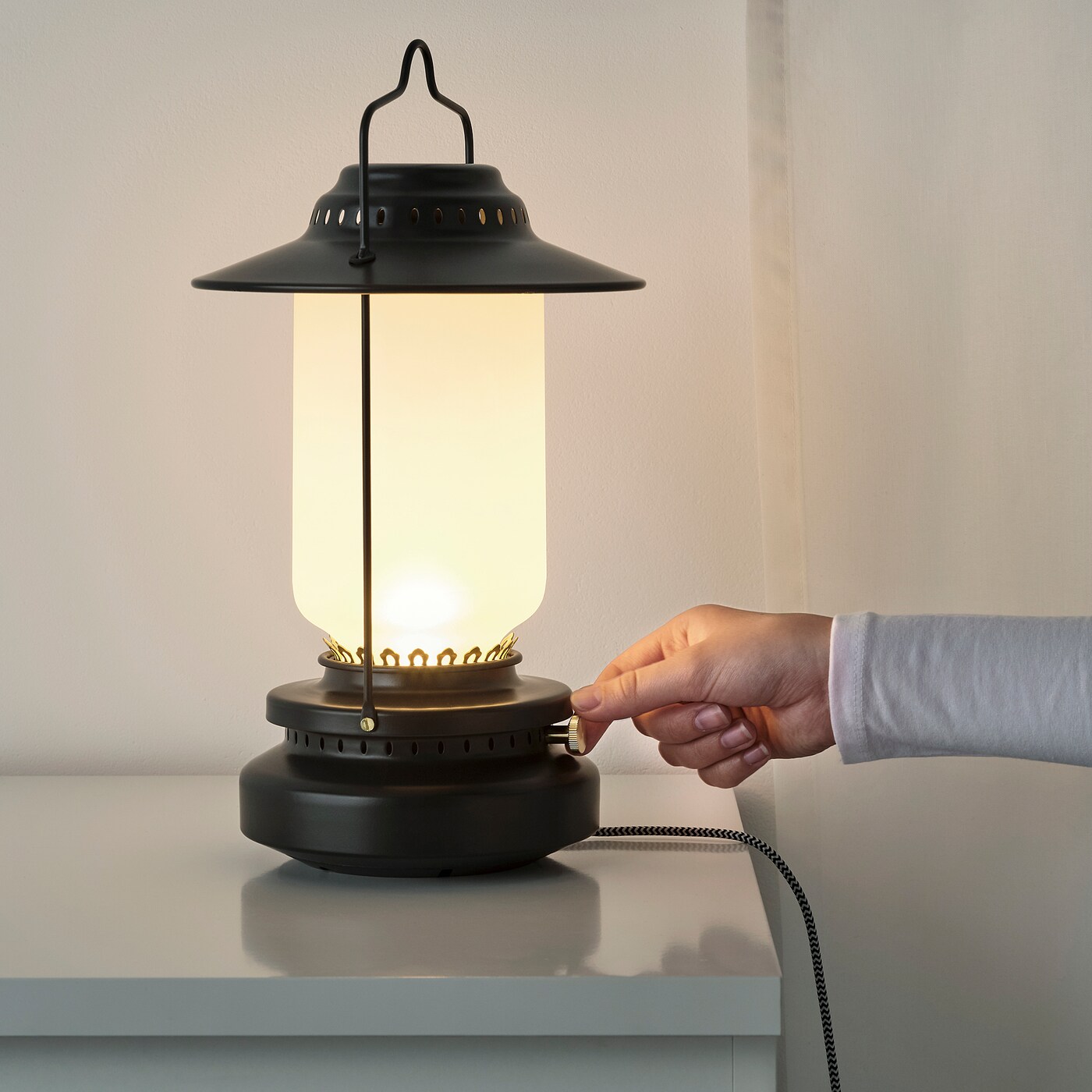

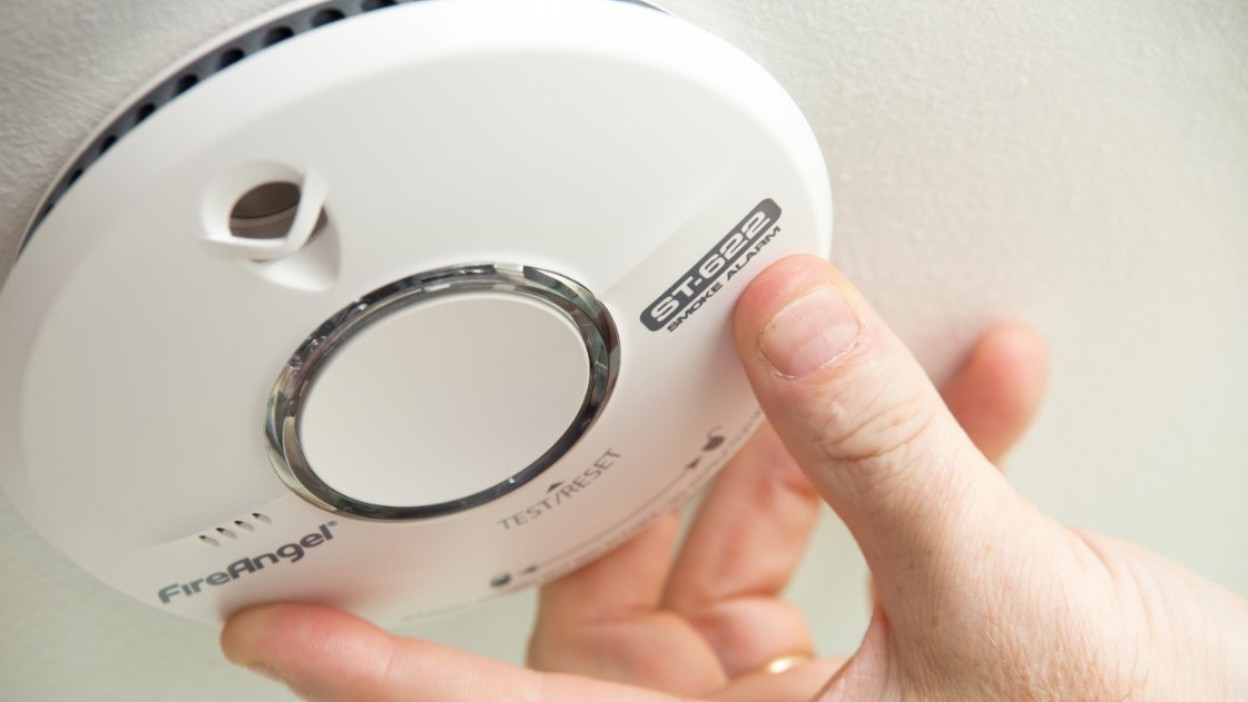

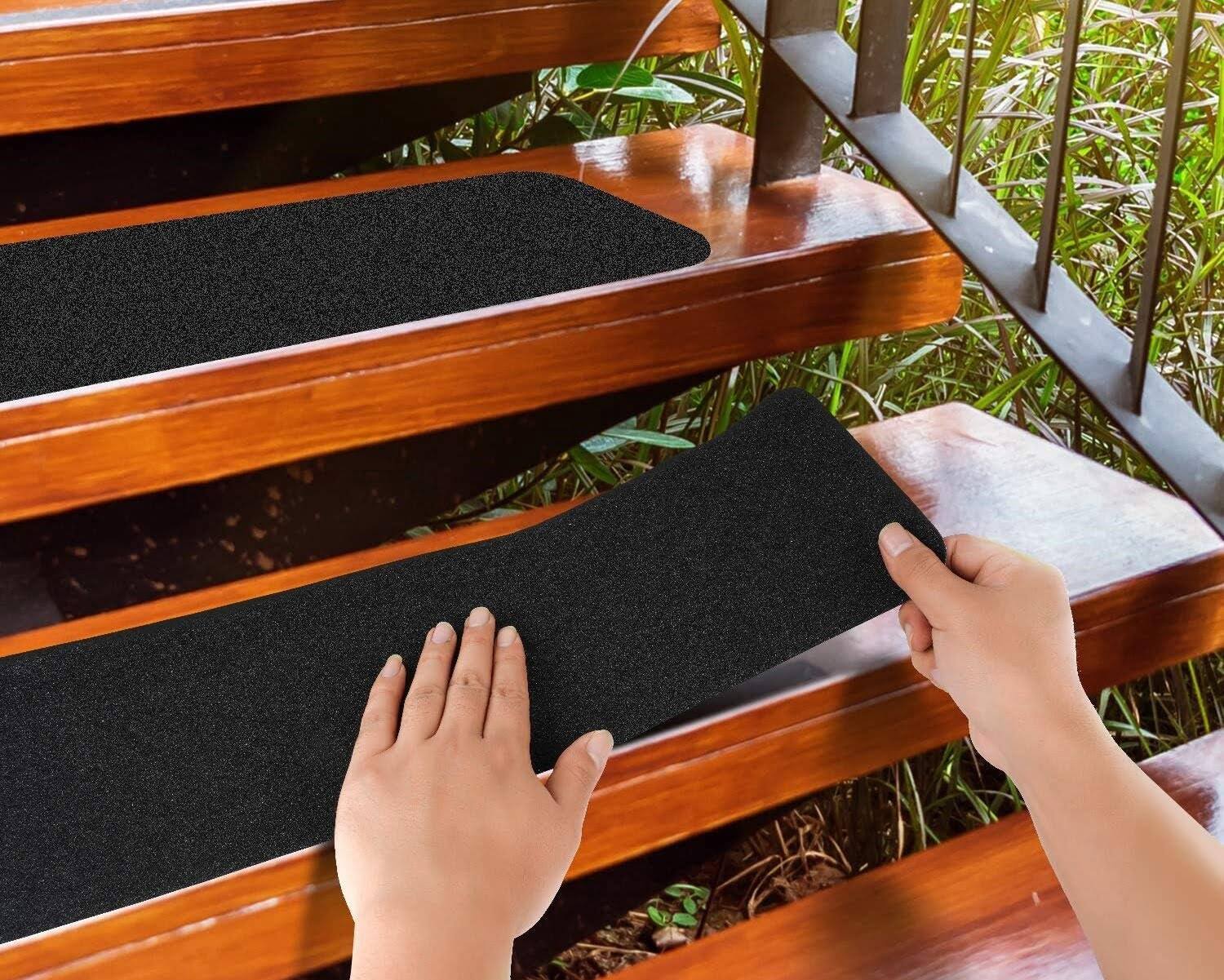
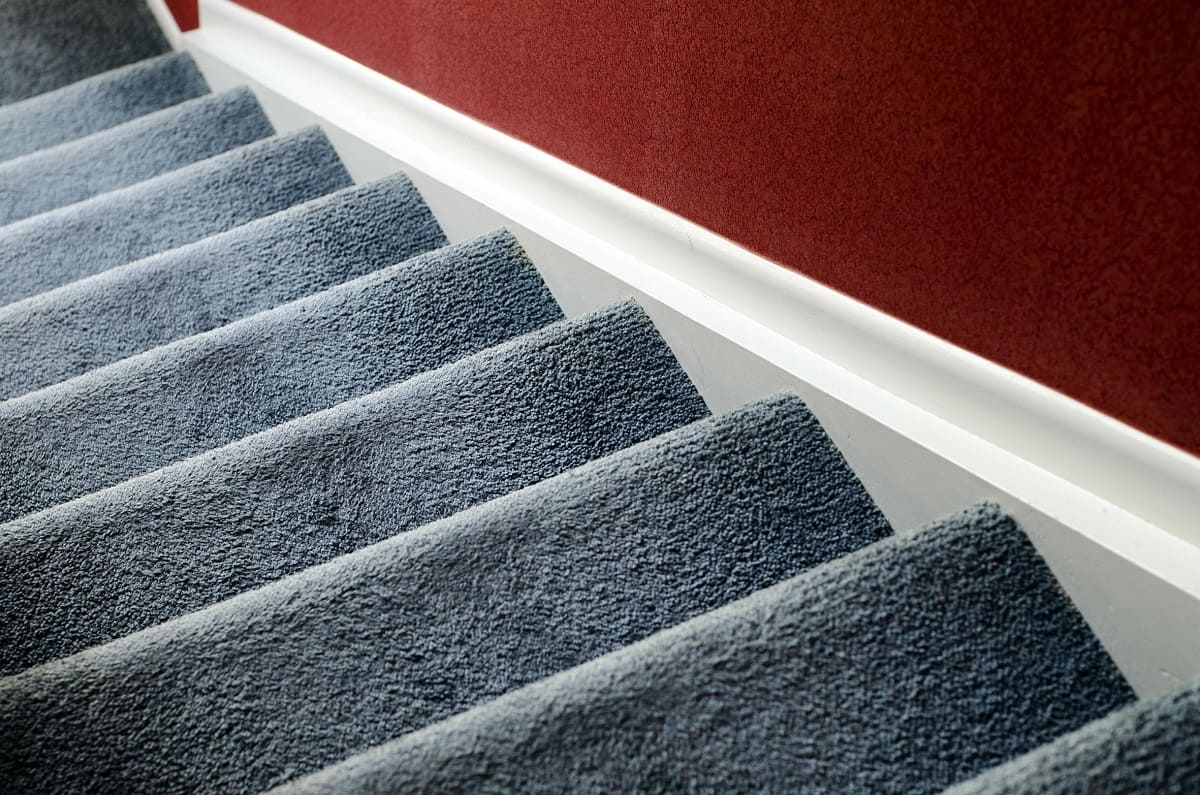
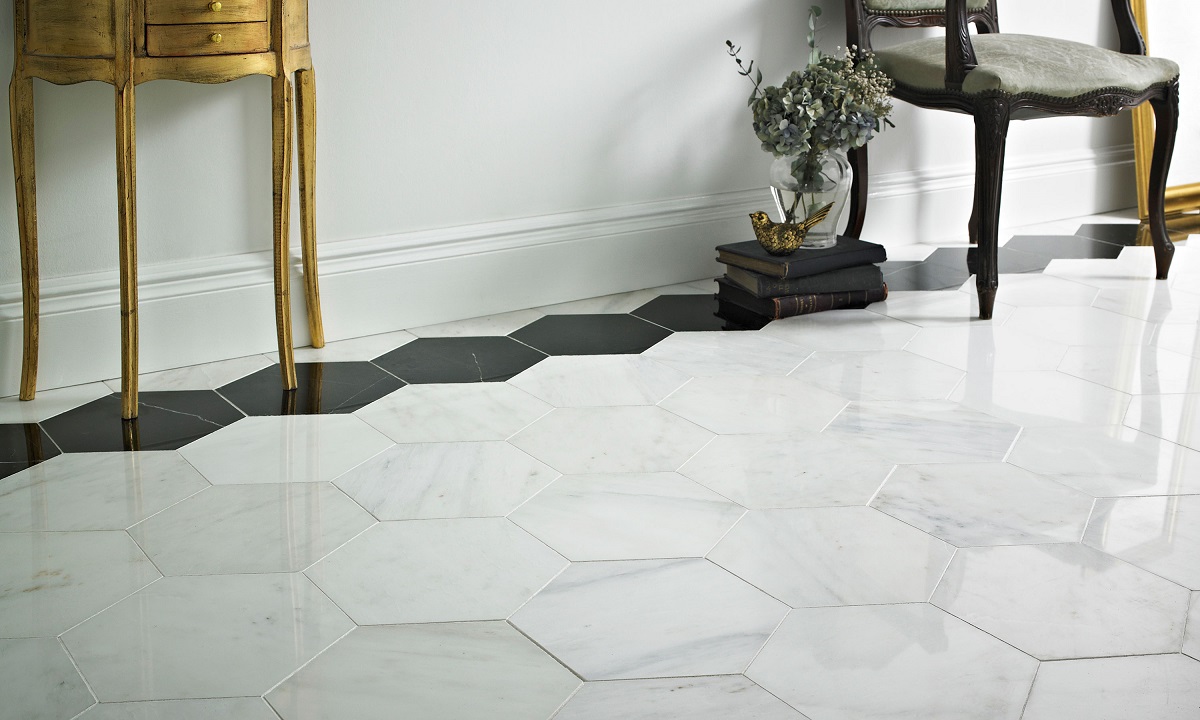


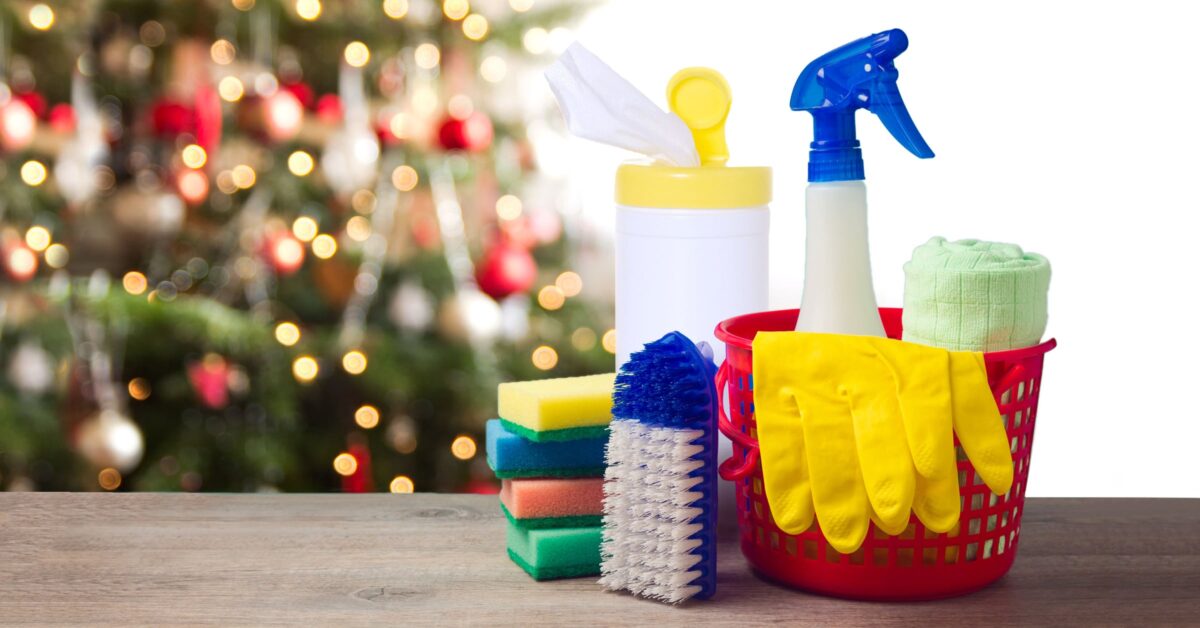

0 thoughts on “This Kitchen Cleaning Checklist Makes Tidying Up Less Daunting”